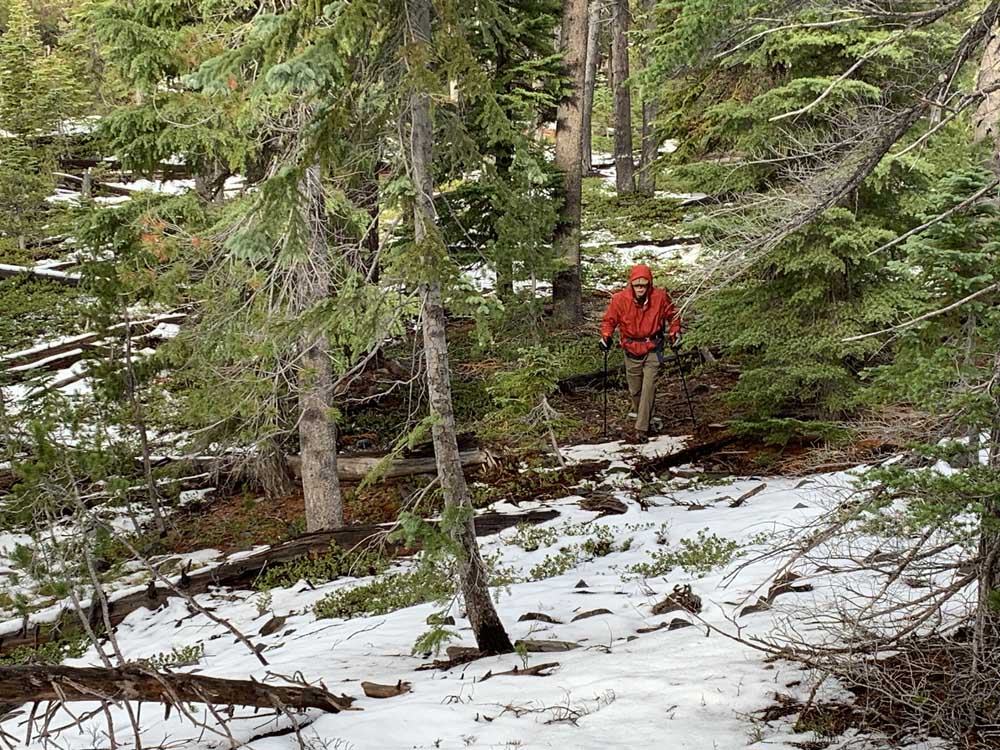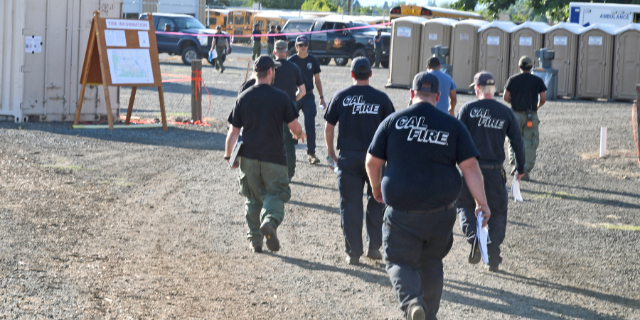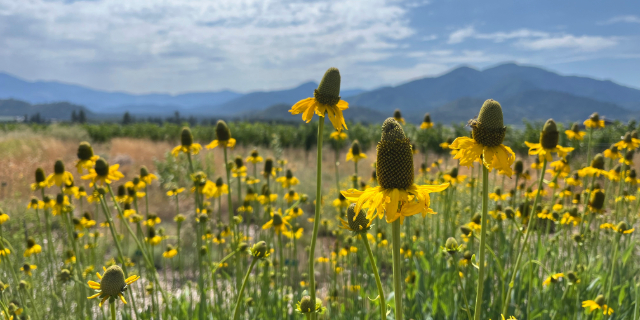Searching for Storm Lake: Sometimes the journey is the reward
Published 10:30 am Friday, November 24, 2023

- Gary Vequist searching but not finding Storm Lake.
MOUNTAIN LAKES WILDERNESS — We never did find the lake, but the storm found us.
Trending
Our goal for the day’s hike was Storm Lake. Based on the Mountain Lakes Wilderness map, the lake in Klamath County is shown as being just off the Varney Creek Trail, a trail I’ve hiked dozens of times, but I don’t recall ever seeing a lake at that location. Had I somehow missed it?
The person who organized the hike had told us the distance from the trailhead to the lake was about 2½ miles. But 3-plus miles in, we were still searching for Storm Lake. Searching, but not finding.
Then, ah, a good omen. The crisp, clear, cool skies clouded over. Light rain fell. Then sleet. Raincoats emerged from our daypacks. Was the storm welcoming us to Storm Lake?
Trending
No such luck.
After a pause, the search resumed. “It’s probably another quarter-mile,” we were assured.
We kept going, ever hopeful, but increasingly wondering if we would find elusive Storm Lake.
One member of the group had a Garmin GPS that indicated we were at the place where the lake should be.
We weren’t.
To add to the confusion, the Garmin showed the lake as being on the left side of the trail, but the Forest Service map showed it as being on the right.
We stopped for lunch; then, still hopeful, continued up the trail. The sleet and sprinkles ended and the clouds retreated, offering glimpses of blue skies. The raincoats were stashed back in our daypacks. We kept on keeping on, sometimes veering off the trail in search of the elusive lake. No luck. As we gained elevation sections of the trail were littered with patches of snow.
After continuing another quarter-mile we continued on another quarter-mile. Still no lake.
After four-plus miles we gave up and turned around.
No, we never found the lake, but no one was complaining. The variable weather and, even more, the rich scenery more than compensated for not finding the lake.
It proved pure pleasure immediately from the trailhead parking area, where the trail immediately enters dense woodlands. After passing through an initial section of lodgepole pines, the forest becomes more variable with a mix of Douglas fir, occasional majestic ponderosa pines, then stands of red fir and white fir. The grade is mostly gradual but never steeply uphill. Once past the wilderness boundary sign the trail continues on, eventually reaching and crossing Varney Creek on two footbridges.
A short distance on, the trail accesses the original Varney Creek Trail, which followed the creek from its now vanquished trailhead off Forest Road 3610, the Varney Creek Road. No remnants of the former trail exist. The merged trail angles left, a mostly gradual, steady climb.
Mount Harriman looms above as the trail passes through meadows and lush forest including mountain hemlock and sugar pine. During the summer months the trail is colored with monkshood, larkspur and other wildflowers, but because it was November they are long gone. Gone, too — but definitely not missed — are mosquitos, which hungrily feast on hikers and backpackers, especially in July and early August.
Along with being known for summer season mosquitos, the Mountain Lakes Wilderness has sunnier claims to fame. Not only is it one of the nation’s original wilderness areas — it was designated in 1964 as part of the 1964 Wilderness Act — it’s also the only wilderness that forms a perfect township square — 36 square miles.
Interestingly, too, the area’s geology has been revised. Forest Service brochures describe the area as the remains of a single caldera that, like Crater Lake, exploded, collapsed and created a scattering of lakes. In recent years, however, geologists have scrubbed that theory. Instead, they believe there were at least four shield volcanoes and that the lakes are in cirque depressions carved by glaciation, not by the explosion and collapse of single mountain.
But we weren’t focused on geology or history. We were searching for a lake we never found. A few days later a Forest Service friend sent a satellite image that shows grass at the location for Storm Lake.
So, is there a Storm Lake? Does it matter? Sometimes the search is the reward, especially in beautiful settings like the Mountain Lakes Wilderness.









